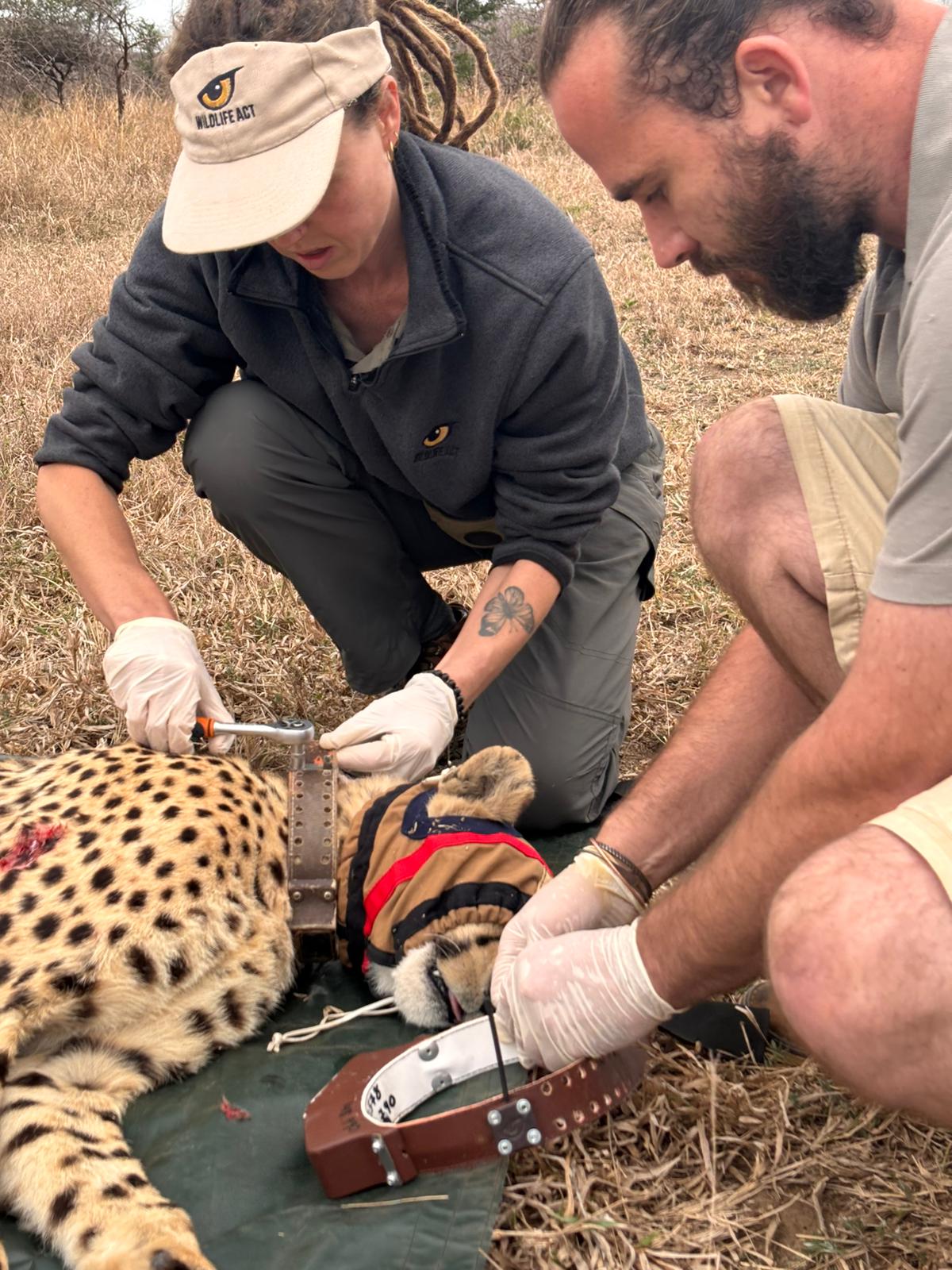Conservationists will now be able to monitor the vulnerable species more closely in one of the oldest and most protected areas in SA, where their population is robust!
KwaZulu-Natal, South Africa (28 October 2025) – In Hluhluwe-iMfolozi Park, two cheetahs recently got their tracking collars!
Wildlife ACT, Ezemvelo KZN Wildlife, African Wildlife Vets, and the Forever Wild Foundation waited out tricky weather for days before they could safely dart and fit them. Cheetahs are extra sensitive because of their enlarged hearts, so the timing had to be right. After some tense days, the team managed to pull it off.
Collaring is a vital tool that we don’t speak about enough.
It helps conservationists manage wildlife effectively, especially vulnerable and intensively managed species like the cheetah. Each of the two new units fitted to Hluhluwe-iMfolozi’s cats contains satellite and VHF components that allow for close monitoring.
“Real-time tracking through both VHF and satellite collars has changed what’s possible for our teams,” says Gareth Robinson, Wildlife ACT Senior Field Technician. “Satellite data gives us the wide view of how individuals use the landscape, while VHF tracking lets us locate them directly in the field. Together, they allow us to respond quickly to threats and build the knowledge needed to manage this population effectively into the future.”

That data does more than tell scientists where a cheetah’s been wandering.
It helps catch problems early. If an animal stops moving, it could be a sign of illness or a snare. It also paints the bigger picture of how the population is doing, whether individuals are breeding, and which animals could be candidates for translocations to boost genetic diversity elsewhere.
“Hluhluwe-iMfolozi’s Cheetah population are now in a position to make an important contribution to the national metapopulation,” explained Danielle Theron, Wildlife ACT’s Big Cat Programme Manager. “Monitoring, utilising collaring as a tool, allows us to identify individuals for potential translocations, track reproductive success, and ensure that this population continues to strengthen both locally and nationally.”
And Hluhluwe’s cheetah population is especially important. It’s one of the stronger groups in KwaZulu-Natal, meaning it can feed into the national metapopulation, which is essentially a network of cheetah populations managed together to stop inbreeding and keep the species resilient.
With only about 7,100 cheetahs left in the wild, keeping track (literally) matters.
“This operation has given us the foundation we need to carry the work forward,” said Danielle. “Each collar fitted adds to our ability to monitor individuals daily and to ensure Hluhluwe-iMfolozi remains a stronghold for Cheetah conservation in KwaZulu-Natal.”
Sources: Supplied
Don’t ever miss the Good Things. Download the Good Things Guy App now on Apple or Google.
Do you have something to add to this story? Please share it in the comments or follow GoodThingsGuy on Facebook & Twitter to keep up to date with good news as it happens, or share your good news with us by clicking here or click the link below to listen to the Good Things Guy Podcast with Brent Lindeque – South Africa’s very own Good Things Guy. He’s on a mission to change what the world pays attention to, and he truly believes there’s good news around us. In the Good Things Guy podcast, you’ll meet these everyday heroes & hear their incredible stories:
Or watch an episode of Good Things TV below, a show created to offer South Africans balance in a world with what feels like constant bad news. We’re here to remind you that there are still so many good things happening in South Africa & we’ll leave you feeling a little more proudly South African.

